Rick Wayne's Blog, page 95
November 13, 2016
The Best Songs You Missed (#1)
Most evenings, I post a song on social media — what I call the soundtrack to tonight — and add it to an ongoing playlist covering all genres of music. Here’s the five songs you missed this week.
And here is the full ongoing playlist for those following along at home. (I recommend listening on random.)
Since this is the fist edition, we’re gonna throw in a few extras:


The Five Songs You Missed This Week
Most evenings, I post a song on social media — what I call the soundtrack to tonight — and add it to an ongoing playlist covering all genres of music. Here’s the five songs you missed this week.
And here is the full ongoing playlist for those following along at home. (I recommend listening on random.)
Since this is the fist edition, we’re gonna throw in a few extras:


November 10, 2016
Winter
“Winter” by Jason Felix
I have two files labeled “Characters” and “Settings” where I dump a lot of the art I find. Flipping through those images later is great inspiration. Sometimes I take bit and pieces directly (and without shame — see Austin Kleon’s “Steal Like an Artist”), but many times the images spark a tangential idea.
For example, while I do’t expect this is at all what the artist was going for, the first thing I saw here was a post-modern slave, someone who is semi-free. (Yes, you could argue we’re ALL only semi-free, and I wouldn’t disagree, but this is obviously a more extreme form that takes a physical manifestation.)
These days, you CAN live without social media, but it’s increasingly rare (in the post-industrial world). I imagine that will continue, and that the same will be true of augmented reality. That is, people will choose augmented reality because of the benefits it offers over the drawbacks — and there will be drawbacks, just like with any tool, from cars to fire.
Over time, that would allow a complex system of intense manipulation where the narratives we all spin to stay sane, maintain the social order, and cohere from moment to moment, could be — for example — algorithmically driven. For example, they could steer people around the world as if some parts of it didn’t exist.
I imagine people WILLINGLY donning (in youth) non-removable helmets knowing that this happens, just as we all know Google and Facebook are watching us right now, but just not care out of the nihilisitc belief that there’s nothing they can do about it anyway.
Right?



November 9, 2016
Final cover set for the completed MINUS FACTION
My superpowered sci-fi thriller THE MINUS FACTION recently concluded with the release of the seventh and final novella, Outbreak. With the conclusion comes a new set of covers that do a better job of linking the books and making it clear that, while each episode introduces and resolves conflict, they are all part of the same single story.
Plus, they just look awesome!







Updates will start rolling out over the next several days, including paperbacks:
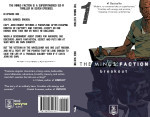
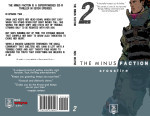
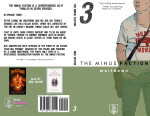
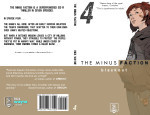
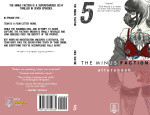
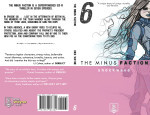
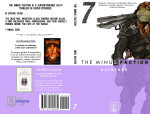


Understanding Our Century: How We Got Here (in two short acts)
I posted this on March 3rd of this year. It is still relevant to how we got here.
#Trump #Election #Election2016 #PresidentTrump
The American Presidency is a fascinating institution and one that has grown and changed over its two-and-a-quarter centuries. Like any complex social phenomenon, it has both manifest and latent functions. We all learn in school, for example, that the president is the commander-in-chief of the armed forces, as specified in the Constitution, but did you also know he is the chief priest of the state religion?
Don’t believe there is one? Go visit the National Archives sometime and walk into the rotunda housing the Declaration of Independence and the Constitution. Note the architecture and the hushed voices, like the passing of the host before the altar at communion. On the walls you’ll see the pictures of the holy saints of the American faith — Washington, Jefferson, Lincoln.
And the president is the head, called upon to deliver a sermon to Congress once a year (and to the people regularly), expected…
View original post 1,448 more words


November 2, 2016
What do you call the end of the end?
I think a lot of the angst in the English-speaking world, from #trump to #brexit and everything in between, comes from the disillusionment that inevitably followed the unwarranted optimism of the early 21st century, by which I mean since 1989.
For those who don’t follow history, generally scholars divide the modern era into a long 19th century, stretching from the French Revolution to the end of WWI; a short 20th century, from the inter-war period to the fall of the Berlin Wall; and from then the 21st.
The end of the Cold War was a big deal. A really big deal. It basically brought to a close — as far as we know, since history is never finished — roughly a thousand years of absolutely brutal intra-European conflict that, thanks to the post-Columbian conquests, eventually spread around the globe. At the same time, the Western economy rebounded, the internet was born (and fed the telecommunications revolution), and smart people everywhere had a sense that humanity had turned a corner, that we’d narrowly avoided thermonuclear holocaust and were on a path to, if not utopia, at least something better.
You saw this in the books of the time, which are a direct reflection of the latest intellectual fads. A whole spate came out declaring the “end” of everything: Fukuyama’s “The End of History and the Last Man,” Horgan’s “The End of Science,” and on and on. (“The End of…” was as popular a book title in the 90s as “The Girl…” is now — The Girl on the Train, The Girl with All the Gifts, Gone Girl, etc.)
On 9/11/2001, history fought back. War returned as a way of life. Capitalism started to wobble — from Enron and WorldCom to the housing collapse. Environmental decay escalated, as seen by Hurricane Katrina and the Fukushima disaster. Even the seemingly benign internet turned from a beacon of the future to a means of stalking children and invading our private lives. More recently, we’ve discovered our racial woes have not, in fact, been quietly improving, despite every formal prohibition known to man.
These days, sovereign debt is soaring, the middle class is shrinking, and democracy itself is on the wane, experienced acutely in the U.S. — from the resurgence of gerrymandering in the late 90s, to the Patriot Act, to the Supreme Court’s Citizens United decision — but also globally in, for example, the uncertain accomplishments of the Arab Spring, which reversed the revolutionary trend toward democracy seen since the collapse of the Iron Curtain.
It’s easy to pick a couple of bogeymen and elevate them to Cause status. And those on the Right are not the only ones guilty of that. But really, it’s not that things are terrible — from the standpoint of history. It’s that they ebb, and if you don’t put effort in, they flow as well. Right down the drain. We never should have been quite so optimistic in the first place.
Not that optimism isn’t useful. Like democracy, it’s better than any of the alternatives. But it needs to be tempered by the phantoms in our basement, the cackling imps of human nature that hide under our hearts, the ones no one wants to believe are inside them (and not just everyone else).
In the old days, we called it the devil. What we need now is a new narrative, a persistent totem that reminds us, continually, what paves the road to hell, and that meaning well and doing good are not the same.


November 1, 2016
It’s here! Your Last Chance to Experience THE MINUS FACTION
In Episode One . . . Beaten. Burned. Broken.
Capt. John Regent returns a paraplegic after escaping months of captivity and torture — except no one knows who took him or what he disclosed.
When a government agent comes for answers, she discovers John’s fantastical secret and sets him at war with his own country. But the veteran in the wheelchair has one last mission, and he’ll fight off the powers-that-be long enough to save the life of a troubled soldier — even if it costs John his own.
In Episode Two . . . Xana Jace keeps her head down, which isn’t easy when you stand seven feet eight inches tall. She works the night shift and stays out of trouble, striving only to be reunited with her son.
But she’s running out of time. The strange disease that compels her body to grow also threatens to choke her heart.
When a masked gangster terrorizes the small community that shelters her, Xana is left with a terrible choice and just twenty-four hours to discover the truth that everything she believes is a lie.
In Episode Three . . . After losing his girlfriend and his job, Ian Tendo’s sensible life has fallen apart. When he’s arrested by the FBI, he doesn’t imagine things could get any worse.
That is, until dark forces recruit him to be an agent of terror. Forced to commit horrible acts in secret, Ian knows death is close — either at their hand or his own.
But unexpected help comes in the form of an eleven-year-old prodigy. Wanted by the police and pursued by a living nightmare, the pair’s only hope is a mysterious organization known as the Minus Faction.
In Episode Four . . . The gang’s all here. After an early success bolsters the team’s confidence, they scatter to their own ends over John’s heated objections.
But when a botched mission leaves a city of millions without power, they struggle to protect the people they’ve put in harm’s way, while under cover of darkness, their enemies strike a killer blow . . .
In Episode Five . . . Team is a four-letter word.
While the wounded heal and attempt to evade capture, the Faction’s mission is finally revealed and John obsesses over the identity of the Prophet.
But when his investigation uncovers a betrayal, the team must face the devastating truth of their origin, and everything they’ve accomplished falls apart.
In Episode Six . . . Lost in the aftermath of betrayal, the members of the team wander alone through the ruins of their lives, searching in vain for hope.
In their absence, a new enemy rises to eclipse all others. Isolated and absent the Prophet’s prescient protection, John and company fall one-by-one to their new foe as the countdown ticks to its end.
In Episode Seven . . . The dead rise. Monsters clash. Enemies become allies. A king unleashes final Armageddon. And four unlikely friends decide the fate of the world.
T-Minus: Zero.
“A unique brand of justice, morality, and heroism.”
“Gripping, immersive, entertaining.”
“Taut, thrilling entertainment.”
“What a freaking ride!”
“Crackles with energy and promise.”
“Singular characters, believable dilemmas, adventure, brutality, beauty, and action.”
“Hits all the feels. I teared, laughed, cringed, held my breath reading a hundred miles per hour!”
“Keeps you guessing, keeps you surprised.”
“The writing is intense and vivid. I’m thoroughly intrigued.”
“This series is one of my favorite things. Messy and real and hard and beautiful.”
“Some of the best, most evocative writing ever. Tears and laughter at the same time!”
“Snippits of poetic loveliness amidst dances of violence.”



October 27, 2016
I’m in love with Schrödinger’s cat
While this is taken from the philosophy of G.W. Leibniz, it represents a kind of late-medieval/early-modern periodic table, with the four elements at the cardinal directions, and the four states between, along with their relations.
What’s interesting is that we still believe in binary relations (attract or repel) and four fundamental states of matter; we just call them liquid, solid, gas, and plasma rather than wet, cold, hot, and dry.
I only bring it up because we tend to look at this kind of stuff as quaint and so obviously wrong. And it is, if by wrong we mean anything other than 100% correct. But then what we believe is certainly not 100% correct either, which suggests that folks in 350 years will be snickering at your ideas as well, you hopelessly deluded cretin.
This diagram is, in a figurative sense, roughly half wrong — which makes it roughly half right. The confusion comes not from the context but from the appearance. The signs and signifiers in this graph are foreign to us. It even uses a dead language (Latin). And in fact, I suspect your brain didn’t even parse it as a graph. But it would have been immediately interpretable by any academic of the day.
On the other hand, a “scientific-looking” meme, dressed up in the right way, will instantly fool lots of people because it employs contemporary genre cues effectively, and your brain judges by cues before content. It’s only when an artful incongruity triggers a pause (rather than an immediate rejection) that your brain emerges from sleep mode and mines appearances for genuine meaning. The rest of your life, you’re just on cruise.



October 25, 2016
Why I don’t argue on the internet
Here the women met them, swords and axes in their hands, and with hideous shrieks of rage tried to drive back fugitives and pursuers alike, the fugitives as traitors, and the pursuers as foes; they mixed themselves up with the combatants, with bare hands tore away the shields of the Romans or grasped their swords, and endured wounds and mutilations…
This quote from Plutarch’s Life of Marius was offered by the internet, with a handful of others, as “proof” that Celtic women were warriors. The other quotes were not cited, and after an admittedly quick search, I couldn’t find a reference — but I did find where they’re making the rounds: website to blog post to social media and back again — so I’ll restrict myself to the one quote.
Thing is, whether or not Celtic women were warriors — I imagine sometimes they were — Plutarch doesn’t actually tell us that. In fact, he tells us the exact opposite!
In the first place, the women in question were Ambrones, a people who came from Jutland, modern-day Denmark, and who are ultimately of uncertain origin. Based on geography alone, they’re more likely Germanic than Celtic, but the latter is certainly possible based on some extant cultural practices. But bits of culture are easily shared, and to just assume the Ambrones were Celts (because you want them to be) is not just shoddy history, it’s irresponsible and anti-intellectual. And it’s important because it tells us a little about the arguer — that they play loose with the facts, for example.
But more to the point, if you read the quote in context, you’re left with a very different impression than was originally proposed:
5 Well, then, the Ambrones became separated by the stream; for they did not all succeed in getting across and forming an array, but upon the foremost of them the Ligurians at once fell with a rush, and the fighting was hand-to‑hand. Then the Romans came to the aid of the Ligurians, and charging down from the heights upon the Barbarians overwhelmed and turned them back. 6 Most of the Ambrones were cut down there in the stream where they were all crowded together, and the river was filled with their blood and their dead bodies; the rest, after the Romans had crossed, did not dare to face about, and the Romans kept slaying them until they came in their flight to their camp and waggons. 7 Here the women met them, swords and axes in their hands, and with hideous shrieks of rage tried to drive back fugitives and pursuers alike, the fugitives as traitors, and the pursuers as foes; they mixed themselves up with the combatants, with bare hands tore away the shields of the Romans or grasped their swords, and endured wounds and mutilations, their fierce spirits unvanquished to the end. So, then, as we are told, the battle at the river was brought on by accident rather than by the intention of the commander.
20 1 After destroying many of the Ambrones the Romans withdrew and night came on; but in spite of so great a success the army did not indulge in paeans of victory, or drinking in the tents, or friendly converse over suppers, or that sweetest of delights for men who have fought and won a battle, sleep…
http://penelope.uchicago.edu/Thayer/e/roman/texts/plutarch/lives/marius*.html
(Section 19, paragraph 5)
First, Plutarch draws a distinction between “women” and “combatants.” Second, he tells us it’s only after the Romans crushed the Ambrone line and broke into their camp that they encountered any women. There they did fight, clearly, but not on the battlefield.
At this point, someone will probably mistake me for a “men’s rights activist” or some bullshit. People evaluate arguments not by what you say but toward which extreme you are pointing. They draw a straight line from your words and drop you at whatever pole it hits.
I can’t control what other people do. I can only control myself. And after all is said and done, I don’t want to argue about it. So why share? What’s the point of pointing someone at reasoned criticism if you’re not willing to die defending it, like the Ambrones in the river?
Because I don’t have to be right. Or, more accurately, I don’t have to be seen as being right. I’ve shared another point of view. I referenced my argument. I’ve armed you with facts. I’ll let you die in the river. I have better things to do.
As wonderful as the internet is for connecting people across any distance — I am typing this from Tokyo — it remains quite possibly the worst medium in existence for enlightened discussion. Interpretive dance would fare better, not least because such a difficult and abstract performance would necessarily put the viewer in a contemplative state of mind (or to sleep).
That’s not to say the medium is incapable of reason. Given proper constraints, it tilts that way. The Economist, for example, poses a question every week and invites two experts to give a word-limited argument, as well as an even more limited rebuttal to their opponent. But they are experts. And that’s not the internet. The internet is the comments section.
In practice, people expect that, when you disagree with them, your convincing retort must fit into a single comment (amid a flurry of competing comments) — basically, that any truth in the universe can be pithy and bite-sized, and if not, well, then clearly you’re wrong.
And let me tell you why.
We all know this to be true. And yet on it goes. If the internet — and social media in particular — is such a horrible medium for debate, why do so many people do it? All. The. Time?
Sport. Entertainment. Some folks enjoy the vigor of wrestling. Like politics, arguing is a species of rhetoric where the goal is to capture the appearance of victory. That’s all it can be, in fact. It’s not possible for it to be any more because there is no final arbiter of truth. The only “win” is a facile one.
Internet arguments are to your local intramural league what politics is to Major League Baseball. That is, measured by weight, the bulk of internet discussions have as much to do with truth-seeking as the bulk of politics does with actual, real governance. But it’s fun for some people, it gets the blood up, just as some folks like to spend their Saturdays on the baseball diamond.
And there’s nothing wrong with that. My only real criticism is that some folks seem to think arguing is more than that, that what they are doing is important, rather that just another kind of sport, and that therefore if you decline to argue, as I do, you are automatically of an inferior species.
Steer far from them.
(art by Ron Allouche)


October 10, 2016
The Science of Superpowers | The Scriptors
via The Science of Superpowers | The Scriptors
Writers have a kind of superpower. We’re illusionists, of a sort. But where a magician invites your disbelief—indeed, taunts it from you with tricks—a writer conjures coherent fantasy from your mind, just as a laser emits coherent light. A story drafted with art and skill creates whole people, even entire worlds, that readers relate to with anxiety and frustration, tears and laughter, as if they were completely real.
I wanted to bring THE MINUS FACTION to life in this way, and that meant the team’s abilities had to be more realistic than something you would find in a traditional comic—not because stories in that medium are lacking, but because prose doesn’t lend itself to the outrageous as well as the four-color press! At the same time, it was also important the series not lose the awe and magic that keep bringing us back to stories of the fantastic. I didn’t want superhuman abilities that were legitimately, scientifically possible. Such a story would merely transport the reader out of our everyday world and into . . . one just like it, with all the same hazards and frustrations. And that isn’t why we read.
To prove it, take the Law of the Conservation of Matter. When your foot swells after an injury, or a snake bite, it’s because your body shunts fluid into the wound, giving your immune cells space to move around and clean up the mess. But your total mass remains the same, and if we were being realistic, then when Bruce Banner’s entire body “swells” to become the Hulk, he would necessarily retain the same mass, just in a larger volume. The only way that’s possible is if he became less dense such that punching him was like punching gelatin.
Now, a Jell-O Hulk is no threat to anyone, which is absolutely no fun (unless it’s for your nephew’s birthday party). What I needed was superpowers real enough you could almost touch them across the gap of disbelief—fantastic abilities that extended genuine real life phenomena. Luckily, Nature is full of inspiration. After all, birds really do fly. Bats and dolphins really do have sonar. Electric eels really do emit deadly jolts of electricity. The saliva of Komodo dragons really is toxic and infested with deadly bacteria. Beetles really do squirt burning chemicals. Chameleons really do change color to blend into their surroundings. Certain kinds of bacteria even eat radioactive waste!
One can imagine, then, science-based ways that humans might do some of those things. Take heat-shock proteins, for example, which many creatures—including humans—express under extreme conditions, such as after a burn. Heat-shock proteins have different thermodynamic properties than normal proteins. They don’t work as efficiently, but they can operate at higher temperature and buffer cells against further damage. It’s possible, then, that an individual could develop a mutation where their heat-shock proteins absorb incredible amounts of heat, thereby cooling, or perhaps even freezing, anything they touch (since heat flows like a fluid). That’s not exactly Iceman, but it’s something real enough that you could imagine it in our world.
There are limits, of course. Just because ants and spiders are super-strong doesn’t mean humans can be. Little animals have a size-to-weight ratio we can’t mimic, which means super-strength isn’t transferable through a spider bite. But that doesn’t mean a variant of human muscle couldn’t (theoretically) be inordinately strong. Evolution hasn’t hit upon every conceivable protein configuration, and modern materials science tells us that carbon-based polymers can be both highly contractile, like protein, and extremely strong, like nanotubes.
But unlike heat absorption, the biophysics of super-strength are tricky. Any creature afflicted with a “super-strong muscle” mutation would also need concurrent mutations that strengthened its skeletal system, which would otherwise snap under the strain, leaving the animal immobile, in pain, and unable to find food! What’s more, strong muscles don’t immediately bring impenetrable skin, or even large size. In fact, to the degree such muscles would be denser, requiring more energy and raw material to build, such animals might actually be smaller than normal given the same number of calories.
To discover my solution, you’ll have to meet Xana Jace in Episode Two.
Finally, no science fiction story would be complete without a few ideas that stretch to the very fringe of our understanding, such as John’s ability to hitch. I foist it on a natural phenomenon called quantum entanglement for two (arguably) justifiable reasons. First, as smarter people than me have noted, some kind of quantum effect probably mediates consciousness, which remains for me the greatest superpower in Nature. Second, there is solid evidence that cells and tissues use “spooky” quantum effects—to use Einstein’s word—as part of their normal function. For example, something called quantum coherence seems to be crucial for photosynthesis, which I would bet is going on very close to you right now.
In short, quantum biology is a thing. Living tissues legitimately employ quantum effects all the time. So assuming some quantum process really does underwrite consciousness, it’s at least conceivable that entangled particles could link one mind to another. And in fact, the biggest criticism I’ve received is not that such a thing couldn’t happen, but that in projecting his consciousness, John wouldn’t have the “muscle memory” he would need to employ his specialized training.
Just to make it clear, there’s no such thing as “muscle memory.” Muscle fibers don’t store information. What we call “muscle memory” is a type of procedural memory kept, along with all your other memories, in your brain. What’s more, although I don’t really get into it in Episode One, for my idea to work, John’s mind wouldn’t actually leave his body, although it would feel to him like it does. Rather, his own brain would still be the seat of his consciousness; it just interfaces with another central nervous system remotely through the (very real) quantum entanglement effect, which allows for instantaneous action at a distance.
Of course, all of this is still incredibly far-fetched, as Neil DeGrasse-Tyson will surely tell you. But then, much of what we take for granted now would have seemed hopelessly far-fetched to someone from an earlier century. In the late 1800s, for example, the inventor-hero Frank Reade, Jr., protagonist of a popular series of juvenile novels, was the Tony Stark of his era, creating such outlandish devices as an electric-powered “air boat” and an automaton that mimicked the appearance, intelligence, and behavior of human beings—that is, a helicopter and a robot. It’s safe to assume a global information network, holding the sum of human science and accessible to everyone via a device that fits in their pocket, would have seemed either too ridiculous to print, or a bit childish, like Dick Tracy’s radio watch.
The art, of course, is to marry the science to the speculation such that coherent fantasy emerges spontaneously in the reader’s mind. I hope I succeeded.
Episode Six of THE MINUS FACTION is available now. The conclusion, Episode Seven, will be out later this month.






